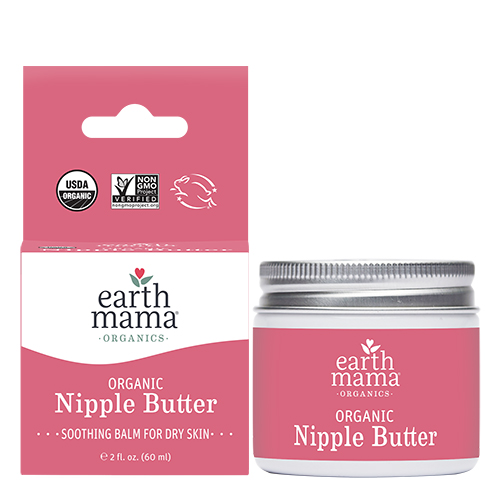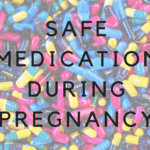Breastfeeding begins with painful letdown of milk supply, but for some moms the nursing discomforts gets annoying to the extent, that they do not wish to continue.
Dealing with breastfeeding problems is not as easy. It takes a lot of patience and perseverance to overcome the struggles of nursing difficulties.
Although it may take several weeks for breastfeeding moms to have everything go smooth. A new mom may have to give baby some time to establish a good latch that will eventually lead to a picture-perfect breastfeeding experience. Remember every mom’s experience is different and so as her body.
For exclusively breastfeeding, new moms have to stay put and see how well you experience yourself as a nursing mom.
For moms who choose a combination feed of their babies does not make them bad in any way. in addition to that, there are a few moms who may not have enough supply even after several weeks of trying. No matter what way you choose to feed your baby, remember, “fed is best”. You should not starve your child just for the sake of giving breast only.
This post may contain affiliate links. Please read our disclaimer for more information.
How to solve breastfeeding problems and Nursing Difficulties
Breastfeeding problems are real and you cannot ignore as they might get worse.
The irony is what’s natural doesn’t always come naturally. Breastmilk is natural but it takes time to have enough supply. Unfortunately, this becomes a struggle for new moms to have that idealistic picture of breastfeeding.
Babies take time to latch. Some are quick learners. They have good suckle naturally, while some have to learn and they take their sweet time.
You may have tons and tons of advice or pressure from other moms in the family, friends, nurses, doctors, lactation consultants, listen to what they say. Some of the advice may prove to be helpful.

Also, be aware you may end up having unsolicited suggestions, contradictory, confusing or just plain wrong advice.
However, if you are a first-time mom or expectant mom with a plan of breastfeeding, here is what you need.
A virtual breastfeeding class by a Certified Lactation Educator, Stacey at Milkology. She is going to teach you what you actually need to know as a first-time breastfeeding mom.
To be honest, breastfeeding may seem easy but it is NOT in the beginning. Learn how you can make it easy.
If you are new to breastfeeding, here is what you need to know. 40+ breastfeeding tips for new moms to have a smooth breastfeeding journey.

Best Tips to deal with breastfeeding Problems and breast irritations
For a good nursing experience, you have to make sure your baby is latching on properly called an asymmetrical latch.
1. Use Nipple Shield
Not every breast or nipple is created equal. There are different sizes and shapes. Sometimes nipple size may become a problem for breastfeeding. In order to solve that, moms may use a nipple shield for a better breastfeeding experience.
Breastfeeding becomes painful with sore nipples, cracked and dry nipples that hurt. Once you have the flow and your baby gets a proper latch then the pain surely fades away. Mild irritation or discomfort that occurs only at the start of each feeding is generally associated with newness of breastfeeding.
Rest assured, the pain will go away in a couple of weeks after you establish a good milk supply.
2. Use Nipple Cream
Using Organic Nipple butter helps soothe sore nipples. Apply generously before and after the feed and let it air dry. Or applying your own breastmilk is an effective remedy to help cracked nipples.
If one breast is hurting, choose the other one to nurse your baby. However, if the pain does not go away for weeks, seek professional help.
Sometimes it is about yeast infection that is not letting the discomfort go away. For any breast-related issue that makes you uncomfortable and not getting better, do not hesitate to seek your doctor’s advice.
Buy the most recommended Earth Mama Organics nipple butter.

3. Cramping in the abdomen
When you notice a milk flow, you may notice cramping in your uterus. Mainly, that is the reason if you breastfeed, your uterus shrinks back to its original size in a few weeks. These contractions are considered responsible for triggering the milk let-down reflex.
Related: 20+ Milk Booster Foods that help increase milk supply for breastfeeding moms.
4. When will milk come
As we have discussed it takes about 2 to 5 days for milk to settle in from colostrum to transitional milk, and then mature milk.
Although for some moms it is a few hours of colostrum and then good enough milk to have a sufficient flow of transitional milk. Soon after, mom and baby both get hang of breastfeeding smoothly.
However, for a few new moms, it is not as easy as it may sound. The noticeable change in milk takes place over the course of a few days. If you are concerned about your milk flow, or if your newborn baby is getting enough, or there are signs when you are not sure what is going on. For instance, you may notice a perfect latch but no supply, or your baby is crying unusually too much possible due to hunger or, not having enough wet diapers, then you should never delay a visit to a pediatrician.
Keep in mind, not every mom’s nursing experience is the same. You should never delay if you feel your baby is not getting enough.
Try milk-producing tea to speed up milk supply.
Milk Production tea by Earth Mama Organics helps significantly with milk production.

5. Why there is a delay in milk supply
There could be a number of factors in delayed milk production, however, the most common in C-section moms are due to;
- The effect of IVs for C-sections mom.
- The side effect of medication.
Related: How to increase low milk supply overnight for C-section moms.
6. Going with a flow
Once your baby gets hold of a good latch, the next thing that comes to mind, is your baby getting enough milk?
Newborns get colostrum in the first few days of life – what they need in the first few days of life. Colostrum is rich in proteins, but it lacks fats and sugars. It is the perfect food that your newborn needs.
When you see colostrum a yellowish thick milky secretion from your breasts, that’s a sign you are going to have transitional milk, white thin milk.
Like I said, mother’s milk takes about 2 to 5 days to settle in. the latter case is for C-section moms.
Related: Postpartum diet for breastfeeding moms after C-section.
7. Breastfeeding is about Demand and supply
Colostrum is a complete food your newborn baby needs at this time, that would make the baby hungry and wants to be fed more. This process of demand and supply would help milk supply settle in about a week to meet your baby’s nutritional demands.
Once the flow settles in, milk supply keeps on increasing with your baby’s demand. The more you nurse your baby, your body will sense his increased demand and respond by stepping up milk production accordingly.
During pregnancy, the breast size would increase, but when your milk flow settles in, that is going to make a massive difference in your breast size.
Related: 14 natural ways to increase milk supply faster.
8. The letdown tingle during production progress
The letdown tingle would happen when milk production progress, you would know when yellowish milk becomes white, appears thinner and clearer.
Another sign is; the baby would be making more obvious and gulping noises, and they may seem more calm and busy.
Every mom would have that tingling sensation, although not the same for everyone when milk production increases and breasts become more fuller.
9. Alleviating the discomfort of engorgement
When milk production starts, fullness from breastmilk often called engorgement. It means full to the capacity of being painful.
The discomfort is something new for first-time breastfeeding moms. As the days progress, things will get better.
Do you want to exclusively breastfeed? then you need pumping Class by Stacey. Stacey is a lactation educator and helping millions of other moms too.
Buy Online breastfeeding class.
Effective Ways you can deal with breast engorgement
Frequently nursing your baby may help with breast engorgement.
1. Manual Pumping or electric pumping
- Pumping is the best solution if the let-down is pretty quick. Some women happen to overproduce breastmilk. If the letdown is too quick you may notice baby’s gagging a lot.
- Using Haaka manual pump with lid is awesome and a quick-relief if the engorgement is painful.
- Wearing a sports bra (a tighter one) to decrease production so it is not to the extent of being painful.
- Express some of the milk to relieve the pain. And expression to the extent that your body gets the message of producing more.

2. Warm shower
Taking a warm shower helps significantly with engorgement.
Also, Using warm or cold compress pads on your breast may be helpful.
If you are pumping then there are chances your body is producing more milk. You can pump and store in the freezer in milk storing bags.

3. Breast Massager
Using a breast massager has helped moms significantly. This product is amazing in soothing the clogged milk ducts, improving flow before pumping.
Whether you are a working mom or a stay-at-home mom, using a breast massager before pumping significantly improves milk flow.
What is Mastitis
Mastitis is a breast infection when one of the milk ducts gets infected and stores milk. This will cause swollen, red, painful breasts. In a couple of days, you start feeling sick, feverish, very achy in your breast.
You need to start antibiotics once it is evaluated by the professional health provider.
In the meantime, you can still breastfeed as frequently as every two hours to keep the breasts becoming overly sore.
Please make sure your baby is latched on well every time you breastfeed and try to change the positions.
Also, wearing a well-fitted nursing bra and massaging a breast may help speed up the healing process.
Related: Postpartum recovery essentials for C-section moms
What is Leaking breasts
Every breastfeeding mom must have experienced leaking breasts and for that, you should know: leakage will subside with time. You may experience more leakage with your first child doesn’t mean it is going to be the same with a second one too. This process will take its own time of recovery. Do not stress over it.
Another way you can stop leaking is by putting inward pressure on your breasts by a finger poke. It works like a charm.
Also, pushing back your breasts with closed arms if you are in public, may work most of the time.

Choosing Breast pads
Using breast pads and keeping a few in your baby bag if you have leaky breasts most of the time, would help with public exposure of wet shirts.
You can either use washable breast pads or disposable ones.

Selecting bra
A nursing bra is going to be super helpful for your whole breastfeeding experience. It is not only going to protect your breast from sagging but also keep them in a good shape.
- You need a good fitting bra, not too tight and try to wear it 24/7.
- Prefer a comfort and convenience when choosing a bra that you are going to wear 24 hours a day.
- It should be easy to use and has flaps to fasten and unfasten.
- There is a room of expansion as when the breasts are fuller, it should not be bulging out.
- invest in a good nursing bra for a better experience.
Check out this full-coverage nursing bra.
Using Haaka – a manual pump
Haakaa is a silicon manual pump, a game-changer for leaking breasts. While nursing from one side, you may notice full milk let down on the other side that is being wasted, and ironically, you cannot nurse baby from both sides at the same time. Therefore, it is very essential to have Haaka manual pump to save your “gold milk” for the next feeding. You can use the one with a lid.
You can save breastmilk for 4 to 6 hours at room temperature and 24 to 48 hours in the refrigerator.

Breastfeeding in public
In the US, moms have all the legal rights to breastfeed in public. You may want to use a nursing cover to be more comfortable while breastfeeding in public.
Breastfeeding problems and solutions in a nutshell.
If the breastfeeding battle goes on you may try these solutions.
- Breastmilk supply supplements will help improve milk supply for a breastfeeding mom. Healthy food also plays a vital role in improving milk supply.
2. Nipple shield will help in lessening the pain due to cracked and sore nipples in the early stage of breastfeeding.
3. Pumping by using electric or manual breast pumps.
4. Breast shells for sore and cracked nipples. This will help saving milk from leaking breasts.
5. Tongue-tie is a condition in babies when they are unable to develop a perfect latch because when the tissue under the tongue does not allow the baby’s tongue to form a latch. This may need a doctor’s evaluation so that a minor procedure can be done to solve the issue.
Related: 14 natural ways to increase milk supply faster.

Breastfeeding Position and posture
Once you choose to breastfeed, you should know that a perfect posture plays a vital role in your overall breastfeeding experience, regardless of your birth procedure (vaginal or cesarean).
Elevate baby to your breasts rather than leaning on to your baby. Use pillows for the right amount of support to elevate the baby closer to you. This will help your back and your shoulders stay more relaxed and you would not get tired immediately.
I highly recommend a good quality nursing pillow.
Although these breastfeeding struggles are worth so much, still that does not mean you cannot supplement because you will be judged as a bad mom. No, if breastfeeding is taking a toll on your mental health, and giving you more anxiety, and stressing you out, you should talk to your doctor about other options like formula or donated breastmilk.
Breastmilk or formula, when you know it is okay to use a combination feed.
Related: Natural milk boosters that you must include in your diet now.












